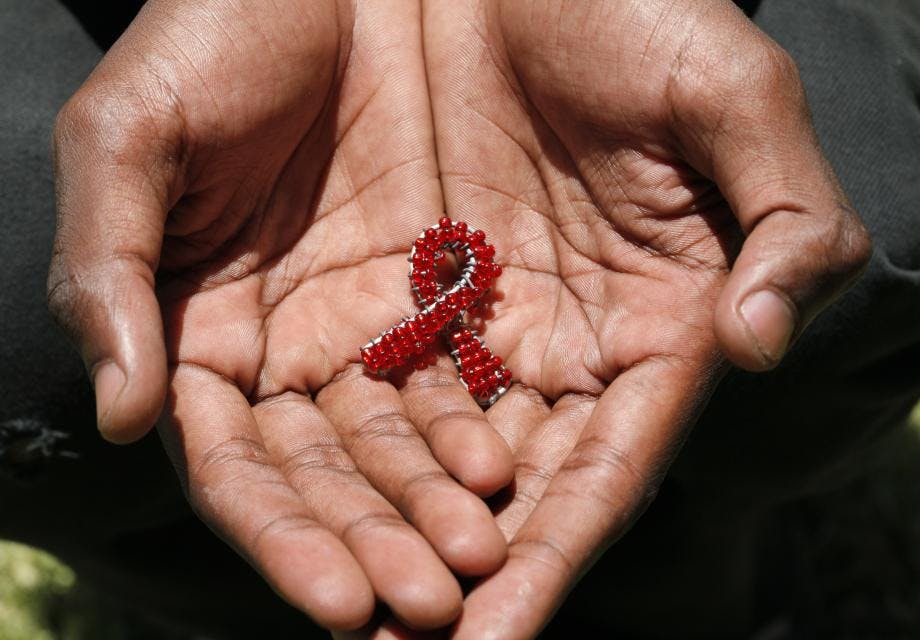The HIV response is under threat: funding and focus are urgently needed
Hester Phillips
14 December 2022
UNAIDS’ latest data shows progress on HIV prevention and treatment has stalled, putting millions of people in danger
This year’s UNAIDS annual HIV data is not good news. As the year draws to a close what can we learn from this report and what should the focus of the HIV response be in the coming year?
What is this news story about?
Data released by UNAIDS’ this year shows the HIV response is under threat, and millions of lives are at risk as a result. During the last two years of COVID-19 and other global crises, progress on HIV has gone backwards.
Why is this important?
UNAIDS monitors HIV across the world. It does this by tracking data on the HIV treatment cascade, and other key things like funding and which groups of people are most affected.
What were the main findings of the report?
Although new HIV infections fell between 2020 and 2021, they only fell by 3.6%. This is the smallest yearly decline since 2016. In 2021, around 1.5 million people got HIV. This is over 1 million people more than the global target.
If action is not taken, in 2025 around 1.2 million people are likely to get HIV. But the global target for 2025 is 370,000, so this would be more than three times off course.
In 2021, the number of people accessing antiretroviral treatment grew at its slowest rate for 10 years. People with HIV who are on treatment and virally suppressed will be in good health and cannot pass HIV on. So this slowdown is worrying, both for individuals’ health and for preventing further infections.
In 2021, HIV infections still fell significantly in Western and Central Africa. But in Eastern and Southern Africa, the decline in HIV infections slowed down significantly. And in all other regions HIV infections rose. This includes Asia and the Pacific, where HIV infections had been falling until last year.
The disproportionate way certain groups of people are affected by HIV remains clear. In Eastern and Southern Africa, women and girls now account for 63% of all HIV infections in the region. In Western and Central Africa, three out of four (74%) HIV infections happened among key populations and their partners.
South Africa, Nigeria, India and Tanzania experienced some of the biggest falls in new HIV infections in 2021. This suggests these countries have been able to effectively deliver HIV prevention services, despite COVID-19 and other crises.
Countries reporting declines in their HIV treatment cascade include Eswatini, where the proportion of people with HIV who are diagnosed fell from 95% in 2020 to 93% in 2021. In 2020, there was celebration when Eswatini reached all three of the UNAIDS’ 95-95-95 targets, but this is no longer the case for the country. In Lesotho, which has one of the highest HIV prevalence rates in the world, the proportion of people with HIV who are diagnosed fell from 93% in 2020 to 92% in 2021. In India, the proportion of people with HIV who are diagnosed and on treatment fell from 88% in 2020 to 84% in 2021. Although these declines are fairly small, any movement backwards is a cause for concern.
What does this mean for the global HIV response?
It means things are off track, so HIV services are likely to come under more strain. There will be more people testing positive for HIV and needing treatment. There is now an urgent need to ensure people who are vulnerable to HIV can access condoms, PrEP and other prevention services.
UNAIDS’ report shows that funding is an issue. Some countries reallocated resources for HIV to address COVID-19, which reduced HIV services. Climate crises and conflicts are also damaging economies, and this is likely to reduce spending on public services, including HIV programmes.
Focusing on groups that are particularly vulnerable to HIV is essential for ensuring the HIV pandemic does not get out of control. But these groups have been particularly affected by the social and economic shocks of the past few years. For example, millions of girls are out of school due to the COVID-19 pandemic, and gender-based violence has increased. Both of these things put adolescent girls more at risk of HIV.
Providing support that addresses the different things that make people vulnerable to HIV is important. The best way to do this is to ensure that communities most at risk of HIV have a meaningful or leading role in designing, delivering and evaluating programmes.
Get our news and blogs by email
Keep up-to-date with all our latest news stories and blogs by signing up to the Be in the KNOW news digest.
